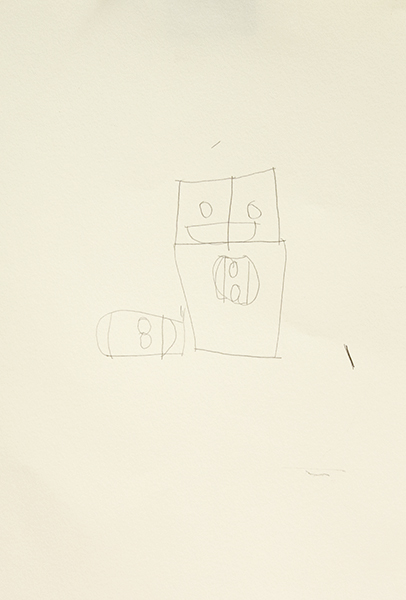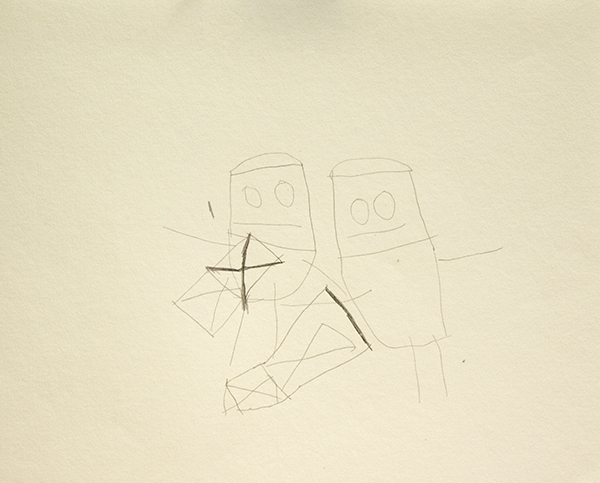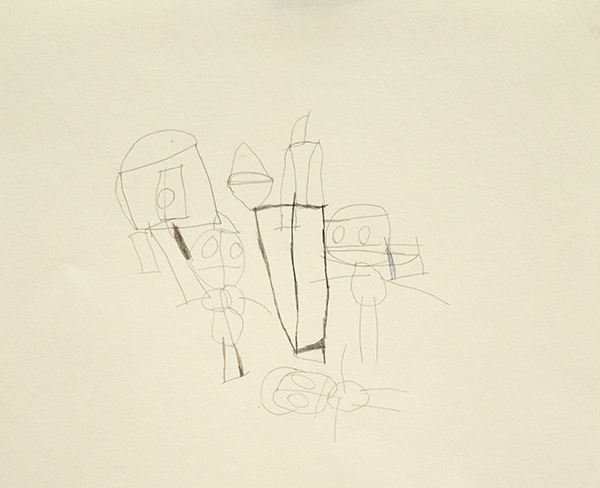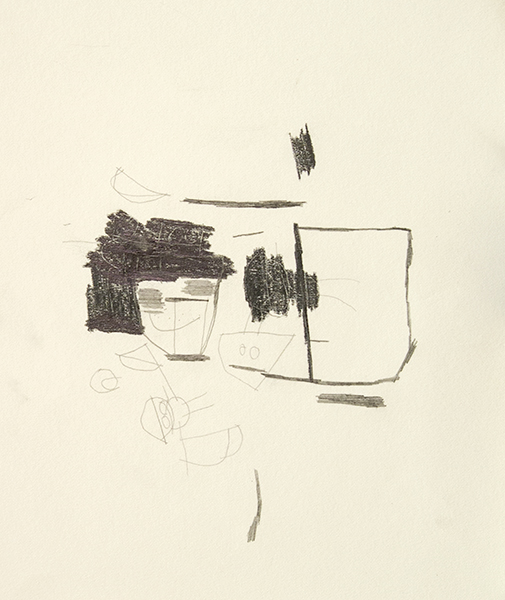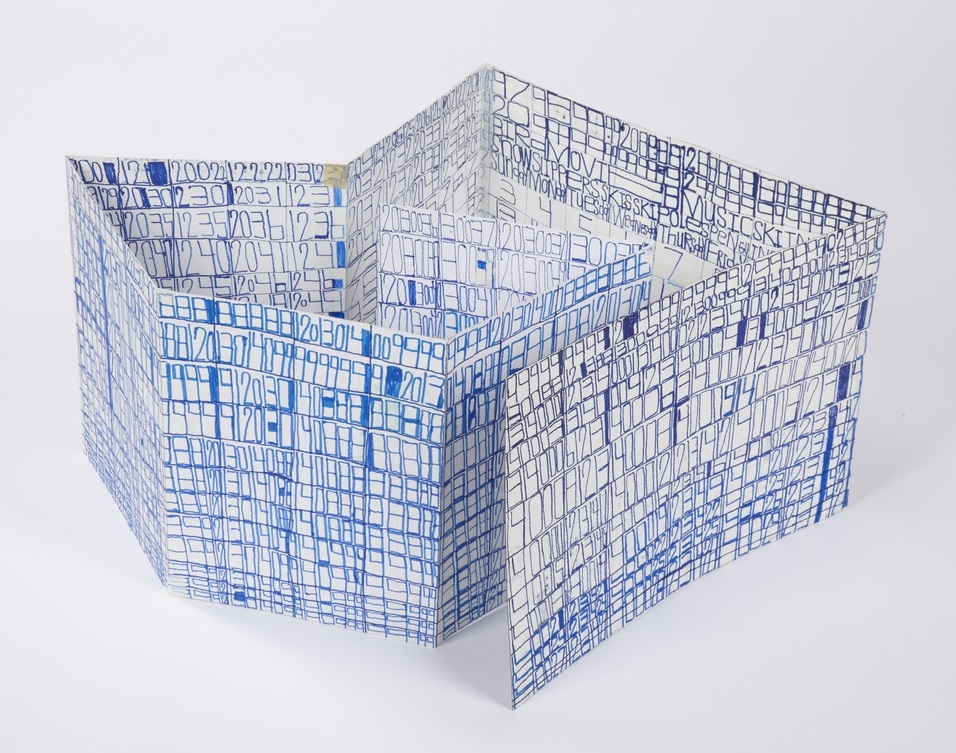Judith Scott in the studio, image via Creative Growth
Over the past several years, as work created by artists working in progressive art studios (as well as those historically categorized as outsider or visionary) has entered the mainstream, questions have emerged about how to appreciate and discuss these artists. What does it mean to contextualize this work as fine art? What really defines this categorization? What role should the artist's disability or dispositional narrative play in understanding the work? Responding to these questions often seems to result in skirting or avoiding the consideration of an artist's biography.
Fear of overstating biography is rooted in a fair desire to understand these artists on a level playing field with their contemporaries, trying to avoid both an especially generous consideration and a disparaging framing of “other” (necessarily lesser) - seemingly opposite ideas that are in effect the same, a phenomenon which we refer to as the “sympathetic eye”. This dismissive perspective suggests that this work is compelling and valuable only relative to biography; “this is a great achievement...for a person with a disability” is the most destructive and unfortunate possible understanding. This problem emerges in two distinct and passive ways: as an expression of a commonly held, inherent bias or an escape from the pressure of formulating a critical, thoughtful response. There tends to be a discomfort (even fear) that disability or mental illness elicits because the true nature of their difference is unknown - it remains a great and beautiful mystery. This mystery provides an unsure footing for the viewer, unable to feel (with either praise or criticism), if they understand and are receiving what's being communicated or that they’ll be exposed with their response. And so, the sympathetic eye is easily provoked and often may occur without provocation, or despite active attempts to dispel it in the nature of presentation.
installation view of Jessie Dunahoo's work at Andrew Edlin Gallery, image via Andrew Edlin Gallery. Dunahoo's installations are vehicles for relating his personal history and fictional narratives, while also recalling their genesis as a tool he devised as a child to navigate his family's farm in Kentucky.
In Nathaniel Rich’s recent piece about Creative Growth in The New York Times (A Training Ground for Untrained Artists), he quotes a 1993 article by Rosemary Dinnage in order to describe the appeal of outsider art: “The fantasy that over there, on the other side of the insanity barrier, is a freedom and passion and color that were renounced in childhood … the longing for a return to something direct and strong and primitive.” Dinnage, and Rich by reference, articulate a sympathetic bifurcation that is false; it’s implicated that mainstream contemporary art (we’ll refer to it as insider art) is inherently more structured and sophisticated (less primitive, less free). If this is understood in terms of biography, the real misconception becomes clear. It’s presumed that biography is important in outsider art and not insider art because the latter has a sophisticated, conceptual structure devised by the artist in the course of intentionally creating works of art (intended to be presented and marketed in the contemporary mainstream), a structure that references western art history and culture. In outsider art, a sympathetic viewer assumes that this sophistication is absent, so biography or a captivating narrative is necessary to take the place of a conceptual structure that provides its context. Thus, the perception is that an artist isn’t being intentional, but instead their disposition is what causes the work to be interesting.
In the presentation of Judith Scott’s Bound and Unbound at the Brooklyn Art Museum, curator Catherine Morris sought to avoid this characterization stating:
We have tried to resist viewing Scott’s lack of speech as a void in need of filling and instead have chosen to focus on what Scott does communicate through her work. Readings that draw on biography to construct narrative interpretations for artists who do not communicate through traditional means have historically taken precedence over other ways of understanding. This exhibition is, in part, an attempt to forefront readings of the work that ask questions without expecting definitive answers or metaphorical readings.
https://www.brooklynmuseum.org/exhibitions/judith_scott/
Despite this earnest attempt to challenge the viewer to accept mystery, Cynthia Cruz, writing for Hyperallergic, responded “I question the importance of biography as it is emphasized in the wall texts. This results in silencing the work, turning it into the strange artifacts of a strange, not-understood person,” (Words Fall Away) suggesting that the mere presence of the artist's biography in the exhibition is sufficient to “silence” the artist's voice. Cruz makes a comparison to A Cosmos, at the New Museum, where Scott's work was exhibited without biographical information among insiders of similar sensibility. Certainly integrating works by artists with disabilities covertly into group shows with mainstream artists will effectively evade the sympathetic eye, but possibly at the cost of putting a ceiling on their careers and ultimately perpetuating the stigma that disability should remain hidden.
Daniel Green, Billy Ocean & Little Richard & Tina Turner, colored pencil/micron on paper, courtesy Creativity Explored
Beyond the problematic implications of both relying on biography too much or avoiding it altogether, often, actively excluding biography is a disservice to the work. David Pagel, in an excellent review of Helen Rae’s exhibition at The Good Luck Gallery (Exhibition Review: Helen Rae), creates an ideal balance of formal, conceptual, and biographical discussion. His criticism focuses primarily on the experience of viewing the work, with keen observations of her routine, artistic process, and unique way of seeing as they are relevant to her drawings, which ultimately assist in recognizing and appreciating their power.
Rejecting the presumption that outsider or visionary art is to be filtered solely through a biographical understanding, whereas contemporary art always speaks for itself, means accepting the fact that some elements of biography are important to all works of art. A heavy focus on biography is, of course, common in outsider art writing. Discussing his recent book about Martín Ramírez with Edward Gómez for Hyperallergic, Víctor M. Espinosa makes an important distinction between a sociological perspective and a formal one:
It is written from the point of view of someone who is practicing the sociology of art, not from that of a conventional art historian … Sociologists believe that no work of art stands alone like that. It’s not that simple. Various factors play roles in how a work of art is produced and, ultimately, in what it might mean at any given time — social, cultural, historical, economic and other factors.
HYPERALLERGIC
Traditionally, a sociological perspective (or even anthropological one) is permissible in the discussion of outsider art, but it’s not only to fill a void where the artist's own explanation is absent. Espinosa points out that absent any “sociological perspective” (ie. biography) the evaluation is incomplete. These factors are an unavoidable element of any work; certainly our knowledge of Kara Walker’s race or Jeff Koons’ marriage to Cicciolina, for example, informs our understanding of their work. As Matthew Higgs points out:
I think that that question of the artist’s biography is something that a lot of people have issue with in relation to outsider art. I was wondering why we don’t know more about the lives of contemporary artists, why it’s only when they suddenly get a 10-page profile in the New Yorker that we find out what their parents do. Unless an artist gets to a certain level of visibility, we know nothing really about a contemporary artist’s life. We don’t know about their home life, about their kids, what their kids do, what their parents did, or what their partner does. All of this is regarded as extraneous to the work, which of course it isn’t. It’s central to the work.
Artspace
Joe Zaldivar, Street Map of Claremont, California, marker on paper, courtesy of First Street Gallery
This begs the question, though, of what’s really occurring and why it's happening now, if outsiders and insiders are so similar in this regard. The real concern is not the presence of these ideas, but who controls them. Andrew Edlin Gallery’s Phillip March Jones explains the additional roles of an outsider art gallery director with Karen Rosenberg for Artspace:
Someone like Judith Scott … there’s a lot of reasons she wouldn’t be able to [market herself]. And other people are just so involved in the works they’re creating that it’s not really part of their reflective process. A lot of the art we show is created for very personal reasons, usually in private. Often, the artists create worlds they wish to inhabit. Maybe sometimes they don’t know that they aren’t inhabiting them—maybe they live within that work, or maybe the relationship to the work is more important, or real, than the relationships they have in our real world. I think someone like Henry Darger very clearly lived more in his work, his drawings, than in Chicago.
…As dealers in this field we have a greater responsibility to the artist, because frequently you are the one who is making a lot of the decisions that the artist would make. When I work with a contemporary artist, they’re present for the installation—they’re doing all these things that for the most part the outsider artist is not engaged in.
Artspace
What Jones is describing, in effect, is a process of translation. The trajectory of American art history over the past 100-150 years has been driven by a search for new concepts and divergent ways of thinking. This has always been most notably achieved by including ideas previously considered to reside in the margins - Picasso’s appropriation of the ideas and aesthetics of African art, the inclusion of women in the 60s and 70s, the appropriation of commercial and design aesthetics by Pop artists, current artists investigating race and LGBTQ issues, etc. This process has lead to a situation in which the boundaries of the creative culture are so thoroughly broken down that contemporary artists are expected to invent art for themselves and, in effect, become new outsiders. What remains of our consensus culture is only in the periphery - pristine white spaces, white cotton gloves, and expensive crates. Insider artists create for this context, but it’s social power has become equally available to objects like the quilts of Gees Bend, which once had a context and purpose of their own, if a curator such as Phillip March Jones is able to provide it.
Tom Sachs Space Program, image via tomsachs.org
Tom Sachs’ 2007 Space Program took place in the blue chip heart of the contemporary mainstream, Gagosian in Chelsea, but it’s only this context that makes it an insider work. Had he created the same body of work, but instead performed the landing in a midwestern backyard then he would be an outsider - and we may give greater credence to his stated goal of creating as a means of attaining the unattainable in a mystical sense, yet his social commentary most likely be dismissed and pathologized as an expression of some strange paranoid thought process. Those distinctions, however, are less important than the fact that it would still be a remarkable and highly sophisticated work. It is an important revelation that the difference between outsiders and insiders is actually just a few delicate details of circumstance. It’s not a desire to escape the superior sophistication of the mainstream that has lead to the inclusion of outsider work, but that the line between the two is increasingly blurred. From our perspective, these designattions have become obsolete and are more appropriately used in only a historical context.
Unfortunately, the sympathetic eye is almost inevitable and shouldn’t be the responsibility of galleries, curators, or art writers to actively target and discourage this tendency. It is their responsibility, however, to confidently lead by example in a full and fair engagement with the work of these artists as they would with any other, including uninhibited discussion of biography, disability, and the various relevant aspects of lifestyle and disposition that inform the work - a respectful practice of appreciating these works by approaching the unknown with wonder instead of fear. This may mean being comfortable experiencing a work as fiction when it was intended as non-fiction or recognizing that compelling, conceptual contrivances of a neurotypical artist may be just as compelling (or more compelling) as intuitive expressions from an artist with an intellectual disability. Because, by definition, neurodiversity will require communication across profound intellectual differences, including vast disparity in the fundamental nature of our experience - the work must become a point of connection without having to result in a consensus.
